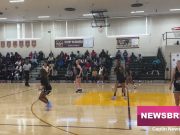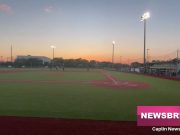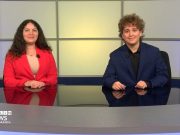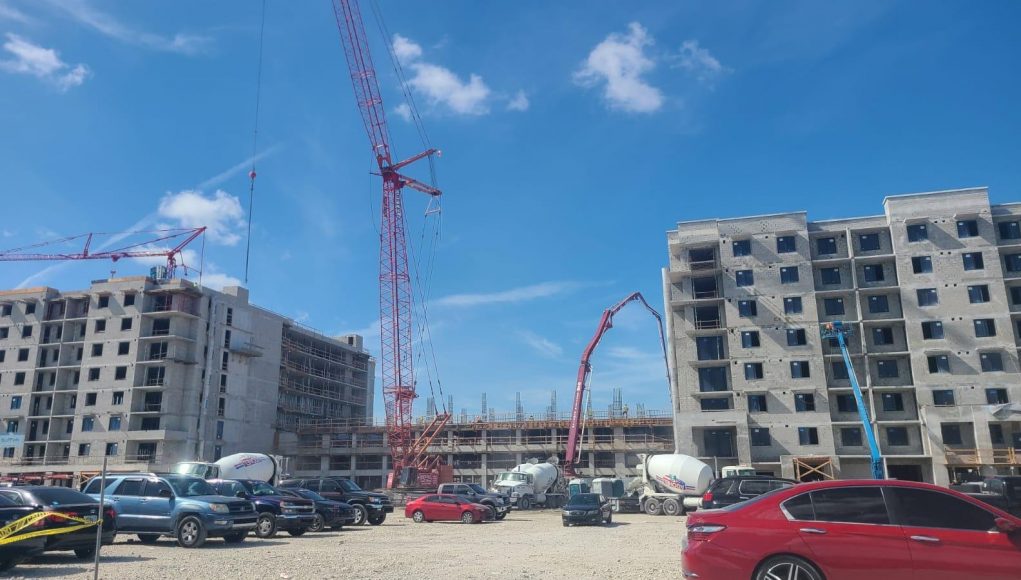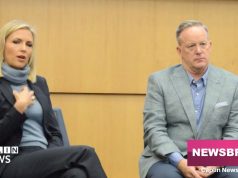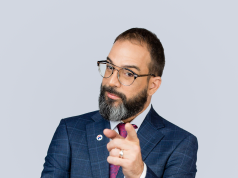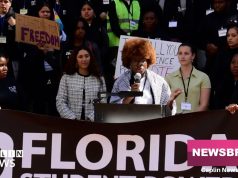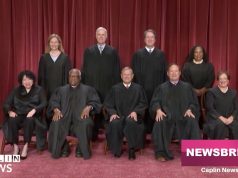A luxury apartment complex is one of the latest projects to break ground in Hialeah, but some residents on the city’s east side are growing weary of this type of development.
The construction of Shoma village was given the go-ahead in 2018, much to the dismay of some area residents.
Members of the Hialeah City Council, which approved the development, did not respond to requests for comment.
The project broke ground mid-2020 after the developer, Shoma Group, secured a $67-million-dollar loan for its construction.
The mixed-use apartment complex, slated to be completed later this year, will have boutiques, restaurants and shops as a commercial and residential area.
For longtime resident Milly Herrera, 60, this mixed-use giant is a project more appropriately termed, “The Monster at Hialeah Drive.”
Shoma Village is representative of a larger issue for her – the erasure of Hialeah as an industrial working-class city.
“For all these years, this is what we’ve been, we are surrounded by industry,” said Herrera. “Is the solution to moving forward ruining one of the most historic neighborhoods?”
For her, the city could be revitalized and cleaned up, but building apartments is not the way to go.
She believes building townhomes or erecting a medical center in some of the plots that are being sold would better preserve the area and still move the city forward.
“We want to protect our neighborhoods,” Herrera said.
And this protection has come in the form of opposing projects like Shoma Village that have been cropping up for the past few years.
The nearly 10-acre Sunny Gardens Mobile Home Park was sold for multi-family use in 2018.
The area that once housed greyhounds for racing before the practice was banned in 2018 was also bought up to be repurposed as an apartment complex in 2020.
Residents petitioned against the latter, garnering over 200 signatures online and more by hand, but the construction went ahead.
However, not all residents are concerned about the development.
Daimi Acanda, 49, has lived in the area for a decade and has been a homeowner there for just as long.
“I have seen that there are new constructions in the area,” said Acanda in Spanish. “But I haven’t personally really seen much impact where I live.”
Other residents, however, view these constructions as holding the city back.
Juan Santana, who runs a nonprofit community service group in Hialeah, feels that residents are not being taken into consideration for issues that affect the community at large.
“We’re supposed to be the city of progress,” he said. “In my opinion, we haven’t been.”
Santana, who is running for mayor, is pushing for a moratorium which would stop any new development trying to come into the city to build any structure that is more than five units.
He believes that the city should refocus its energy into doing internal studies of traffic, crime and the city’s infrastructure instead of building luxury apartments.
Hialeah is the sixth most populated municipality in Florida according to the city’s website.
The city has been a draw for blue-collar families who want to blend urban with suburban. It is becoming a bit of a hotspot.
The average Hialeah single-family property only lasts for about three months on the market, slightly less than the 110-day average for the whole of Miami-Dade County according to data from online real estate marketplace, Zillow.
Demand has increased, and so have home values, which have seen an uptick of 7.2% compared to 2020.
Fewer people are also buying homes in Hialeah with homeownership rates falling below renter’s rates by nearly 10%.
Although rent rates seem to be trumping homeownership rates, some residents of the areas where these apartment complexes are being built feel neglected.
With the propensity of land and properties being bought up and repurposed that feeling has become more personal for them.
Despite the continued approval and construction of these projects, some residents insist that there’s more to east Hialeah than its potential for development.
“We’re more than 49th street,” said Herrera. “We can’t make every city or every area identical.”



















